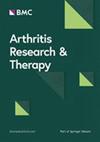Sicca manifestations and lymphoproliferation in hepatitis C virus: effects of direct acting antiviral therapy on dryness and B-cell activity compared to Sjögren’s disease
IF 4.6
2区 医学
Q1 Medicine
引用次数: 0
Abstract
Hepatitis C virus (HCV) can be associated with sicca manifestations. To study the effect of direct-acting antivirals (DAAs) on sicca manifestations in HCV-infected patients and the difference between those patients and others with HCV without dryness & Sjögren’s disease (SjD). We studied 60 patients in 3 groups: Group 1 (20 HCV + sicca), group 2 (20 HCV without sicca), and group 3 (20 SjD). Groups 1 and 2 received DAAs according to the Egyptian Ministry of Health protocols and were evaluated before and after treatment. Group 3 was evaluated once. Our study evaluated the patients by both subjective and objective methods. All HCV cases had sustained viral response (SVR). Comparing the characteristics of groups 1 (before treatment) & 3: Group 1 had a higher frequency of RF, cryoglobulins, and polyclonal-hypergammaglobulinemia (P-values 0.021, 0.003, and ˂0.001 respectively). Group 3 had higher scores of VAS dry eye, VAS dry mouth, VAS fatigue, and VAS pain than group 1 (P-values ˂0.001 in all). Group 3 also had a higher frequency of Anti-Ro and Anti-La (P-values < 0.001). Group-1 before DAAs treatment had higher markers denoting B-cell hyperactivity [higher Rheumatoid factor (RF), cryoglobulins, and beta2-microglobulins (β2M)] compared to group-2 which improved markedly after SVR. This supports that group 1 is further ahead in the direction of lymphoproliferation. Group 1 patients after SVR showed marked improvement in VAS dry eye, VAS dry mouth, VAS fatigue, VAS pain, ESSPRI, and ESSDAI (P-values ˂0.003, ˂0.002, ˂0.016, ˂0.001, ˂0.002, and ˂0.014 respectively). There was a significant improvement in RF, and serum β2M levels (after SVR), (P-values ˂0.013, and 0.001 respectively). Group 1 is further ahead in the direction of lymphoproliferation than group 2 with higher statistically significant serum β2M and polyclonal serum protein electrophoresis (P-values 0.006 and 0.047 respectively). HCV patients with sicca manifestations treated by DAAs showed significant clinical and immunological improvements. The difference between group 1 (before and after SVR) and group 3 supports the notion that they are two different entities, with different characteristic features. Sicca manifestations improved after the eradication of HCV.丙型肝炎病毒的干燥表现和淋巴细胞增殖:与Sjögren病相比,直接抗病毒治疗对干燥和b细胞活性的影响
丙型肝炎病毒(HCV)可与干枯症状相关。目的:探讨直接作用抗病毒药物(DAAs)对HCV感染患者干枯表现的影响及与无干枯Sjögren病(SjD)的HCV患者的差异。我们将60例患者分为3组:1组(20例HCV + sicca), 2组(20例HCV无sicca), 3组(20例SjD)。第1组和第2组根据埃及卫生部方案接受daa治疗,并在治疗前后进行评估。第三组评估1次。本研究采用主观和客观两种方法对患者进行评价。所有HCV病例均有持续的病毒应答(SVR)。比较1组(治疗前)和3组的特征:1组RF、冷球蛋白和多克隆高γ球蛋白血症的频率更高(p值分别为0.021、0.003和小于0.001)。3组的VAS干眼评分、VAS口干评分、VAS疲劳评分和VAS疼痛评分均高于1组(p值均小于0.001)。第3组的Anti-Ro和Anti-La出现频率也较高(p值< 0.001)。与SVR后显著改善的2组相比,DAAs治疗前1组有更高的b细胞高活性标记物[类风湿因子(RF)、冷球蛋白和β -微球蛋白(β2M)升高]。这支持1组在淋巴细胞增殖方向上进一步领先。SVR后1组患者VAS干眼、VAS口干、VAS疲劳、VAS疼痛、ESSPRI、ESSDAI均有显著改善(p值分别为小于0.003、小于0.002、小于0.016、小于0.001、小于0.002、小于0.014)。RF和血清β2M水平(SVR后)有显著改善(p值分别小于0.013和0.001)。血清β2M和多克隆血清蛋白电泳(p值分别为0.006和0.047)在淋巴细胞增殖方向上,1组明显领先于2组。有干枯表现的HCV患者经DAAs治疗后,临床和免疫均有显著改善。第1组(在SVR之前和之后)和第3组之间的差异支持它们是两个不同的实体,具有不同的特征特征的概念。根治HCV后,Sicca的表现有所改善。
本文章由计算机程序翻译,如有差异,请以英文原文为准。
求助全文
约1分钟内获得全文
求助全文
来源期刊

Arthritis Research & Therapy
RHEUMATOLOGY-
CiteScore
8.60
自引率
2.00%
发文量
261
审稿时长
14 weeks
期刊介绍:
Established in 1999, Arthritis Research and Therapy is an international, open access, peer-reviewed journal, publishing original articles in the area of musculoskeletal research and therapy as well as, reviews, commentaries and reports. A major focus of the journal is on the immunologic processes leading to inflammation, damage and repair as they relate to autoimmune rheumatic and musculoskeletal conditions, and which inform the translation of this knowledge into advances in clinical care. Original basic, translational and clinical research is considered for publication along with results of early and late phase therapeutic trials, especially as they pertain to the underpinning science that informs clinical observations in interventional studies.
 求助内容:
求助内容: 应助结果提醒方式:
应助结果提醒方式:


